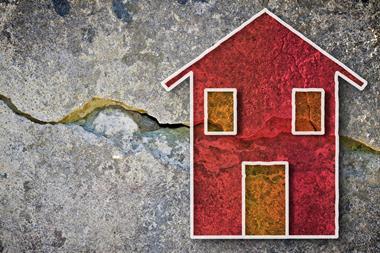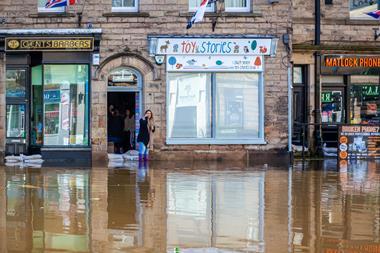’Insurance can be a very important part of building resilience to the increase in weather-related disasters,’ says senior lecturer and coauthor
Insurance schemes need to be more widely accessible and better integrated with resilience measures to be “fit for purpose,” according to Eugenia Cacciatori, coauthor of Disaster Insurance Reimagined: Protection in a Time of Increasing Risk and senior lecturer in management at Bayes Business School.

Speaking following Storm Babet and the arrival of further Met Office warnings, Cacciatori has called for better integration of insurance into the UK’s resilience landscape.
Storm Babet struck parts of eastern Scotland last week (19 and 20 October 2023), with a red weather warning issued due to heavy rain and strong winds.
This caused power shortages across Scotland and Northern England and homes had to be evacuated as wind and rain caused damage to properties.
In a statement released today (1 November 2023), Cacciatori explained: “Insurance can be a very important part of building resilience to the increase in weather-related disasters that we are beginning to witness.
“This is because it provides money to rebuild and can help in rebuilding better.
“Weather-related disasters not only threaten the lives of those that are forced to vacate their homes but, in many cases, the savings of a lifetime and sometimes generations invested in hard-earned private or commercial property can be lost.
“Escalating losses will make it harder for communities to insure their properties and assets. But subsidising insurance to simply rebuild as before is only an expensive short-term fix and will rapidly become unsustainable.
”Insurance against disasters only has a future if it is integrated with other measures that reduce vulnerability.”
Schemes
Cacciatori’s comments came after the Met Office issued a further weather warning for parts of Scotland this week.
Read: Insurance warning issued as Storm Agnes set to batter UK with strong winds
Read: Insurers face surge in burst pipe claims this winter if homeowners keep heating off
Explore more insurer-related content here or discover other news stories here
In its yellow weather warning, it said that persistent and occasionally heavy rain may lead to some flooding and transport disruption in places.
Cacciatori added that the development of schemes such as Flood Re’s Build Back Better “can help, but only if they help reduce vulnerability in the future”.
Launched in April 2022, Build Back Better offers policyholders the opportunity to install property flood resilience measures up to the value of £10,000 when repairing their properties after a flood.
Cacciatori explained: “While initiatives at homeowner level are important, much more needs to be done in areas such as planning and building standards and the insurance sector’s wealth of knowledge on risk has an important part to play”.
“Integrating insurance in the wider resilience landscape is not easy and many countries are struggling with this problem. Some countries, however, offer useful models.
”Switzerland, for example, has insurers included in any conversation about construction and resilience and this mindset must be adopted in the UK to alleviate the worst effects of flooding.”
Hosted by comedian and actor Tom Allen, 34 Gold, 23 Silver and 22 Bronze awards were handed out across an amazing 34 categories recognising brilliance and innovation right across the breadth of UK general insurance.




















































No comments yet